[‘Basin With Green Soap’ (mid 50s) by John Bratby]
Last week’s newsletter will segue neatly into this week’s, once I have recovered from using the verb ‘segue’ for the first time in my life, having always thought of it as 70s Radio 1 DJ's in-word and only to be uttered by the likes of Tony Blackburn and Alan Freeman.
It’s maybe no coincidence, but the discovery that washing-up bowls are perhaps, maybe, on their way out (according to the John Lewis saleswoman, but not according to all your fantastic responses) came hot on the heels of the realisation that soap, too, seems to be threatened. As in bars of soap, the ones that sit in a little dip by a sink’s taps, or in a special dish, or slither around out of reach in the bath water, or leap out of your hand in the shower. As in the most preposterous plot device imaginable when Lady Mary slips on one when getting out of the bath in Downton Abbey. As in the inspiration for Pablo Neruda’s ‘Ode to a Bar of Soap’ and not ‘Ode to a Liquid Soap Pump-Action Dispenser’.
This is not a sudden realisation. I’ve been noticing for quite some time that liquid soap in dispensers which squirt in every direction except your carefully positioned hands have replaced what I consider to be proper soap in showers, bathrooms, kitchens, hotels. I understand the need for liquid soap in places like hospitals and surgeries and public bathrooms, but in the home, well, no. It seems that more young people nowadays think bars of soap are unhygienic,
but I say read about the chemistry of soap, the process of saponification, look at the complex formulae and reactions, and you’ll see why bars are better.
[I was definitely old before my time]
My penchant for soap goes back a long way to early childhood when I was a stern critic of my Mum’s purchases. Colour was important: pale pink, yellow and pale blue bars, but not the rather antiseptic green which matched surviving 1930s bathrooms. Lathering quality was also important, so top marks to Camay and Lux which also had nicer names than Palmolive and Wright’s Coal Tar Soap. Imperial Leather was deemed a luxury item, but that irritating little bit of paper which did not rub off detracted from the elegant initial shape and made it difficult to build up a good lather without it catching on your hand.
[from the Bronnley website]
But the ne plus ultra of soaps was Bronnley Lemon, shaped like a life-size lemon, smelling of lemon, wrapped up in tissue paper and presented in little wooden cases, just like the real thing in greengrocers’ shops. It was impossible to get a good lather because of the shape, but that wasn’t the point. It was a thing of beauty and I often couldn’t bring myself to use one and ruin the “peel” for months after Christmas or my birthday. Amazingly, it’s still being produced.
When I was a little older, I asked for Aqua Manda soap (I’d forgotten about the oatmeal which no doubt stuck to the bath and made a mess when it dried out). This was just one part of the Aqua Manda range and my life’s goals at that point were to collect the whole set (never achieved) and come top in Chemistry (also not achieved).
And I just adored/adore Pears’ soap for its smell and translucency, but didn’t/don’t adore the lather-defying shape which makes it impossible to revolve without feeling like you are bruising your palms.
[‘A Child’s World’, (1886) by John Everett Millais, in the Lady Lever Art Gallery]
On the subject of Pears’, when I was studying the Pre-Raphaelite Brotherhood in what was the best Masters course ever, I was fascinated by the arc of Millais’ career and the fact that he sold out later in life, producing sentimental stuff like this when he was rich and famous. The Dutch C17-style vanitas portrait of his grandson was bought by Thomas Barratt of A&F Pears who cannily used it in adverts - it later became known as “Bubbles”. It’s all a long, long way from the ideals and ideas of the PRB, and it damaged his reputation ever after.
But back to soapiness and lather.
[Caphouse Colliery pithead baths]
To really get the full benefit of a bar of soap, rubbing and friction are needed. When modern pithead baths were built from the 1930s onwards, they transformed some aspects of miners’ lives. It was a brilliant C20 Society lecture by Gary Boyd (also author of this excellent book) looking at the baths from architectural point of view that first interested me, but what a difference to miners’ and their families’ lives it must have made being able to leave work clean instead of taking all the grime and coal dust home to small houses without hot running water. No doubt they went through huge amounts of the soap which was produced for collieries and sold in canteens. And don’t tell me shower gel would have done the job as well.
The same goes for laundry soap, when it was a thing (it still is in France) and huge blocks of savon de Marseille were used on washboards and at the communal lavoirs. And without washboards in the 1950s we wouldn’t have had skiffle, and without skiffle we wouldn’t have had The Quarrymen, and without the The Quarrymen we wouldn’t have had The Beatles.
[‘The Wedding Morning’ (1892) by John Bacon, in the Lady Lever Art Gallery]
On the other side of the Mersey is Port Sunlight, a model village built by William Lever who made a fortune with Sunlight Soap for laundry with the emphasis on whiteness and cleanliness. Lever took FMCG advertising to new heights by buying paintings, often by contemporary artists, and using them for his products (great overview here).
With the kind of product placement the producers of the James Bond films would approve of.
The William Lever/Lever Brothers/Unilever story is amazing: hard soap was the foundation of an entire mini-town built to house the workers at his soap factory (it also produced Lux). It’s worth a visit and a wander around, especially to the Lady Lever Art Gallery with its extensive collections of Pre-Raphaelite paintings and Wedgwood Jasperware.
Hulme Hall at Port Sunlight is also where Ringo made his first official appearance with The Beatles after they had been suitably cleaned up by Brian Epstein.
I still use soap, but nowadays it’s nice, plain, unperfumed, solid, rollable bars of soap. I sometimes even take one with me when I travel because you can’t be sure of what’s at the other end. It’s always nice to find little guest soaps in places that haven’t gone over to pathetic pumps which haven’t been refilled properly and need to be pressed so many times it’s like doing CPR.
[subtitle from shower scene, ‘Psycho’ (1960]
I mean, even Norman Bates puts proper soap in the Bates Motel shower.
Happy Sunday!
[On a different subject, Dr Charlie Lee-Potter’s amazing RCA PhD show Out of the Scriptorium is in the upstairs gallery at Persephone Books shop in Bath until 17th May. It is beautiful, skilfully made, and thought-provoking.]

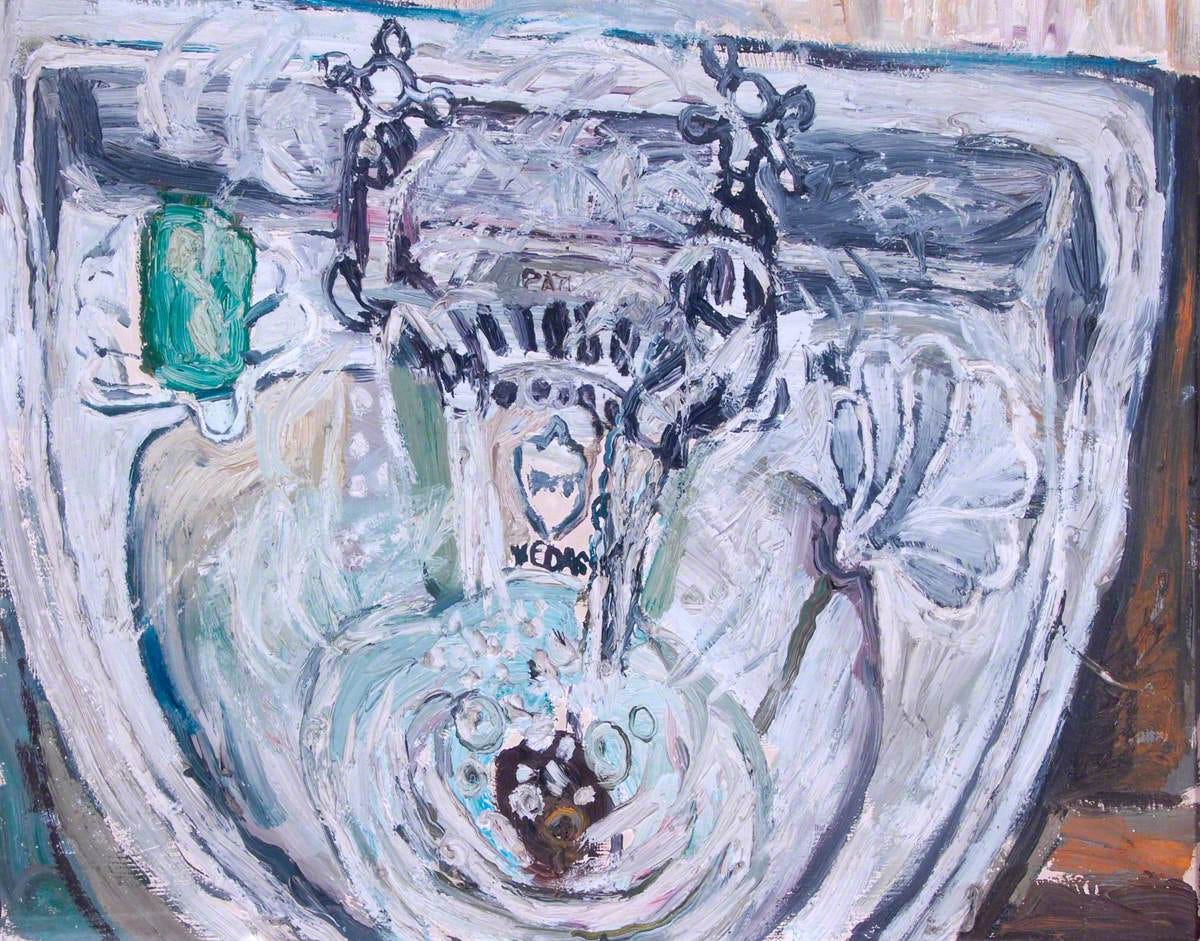


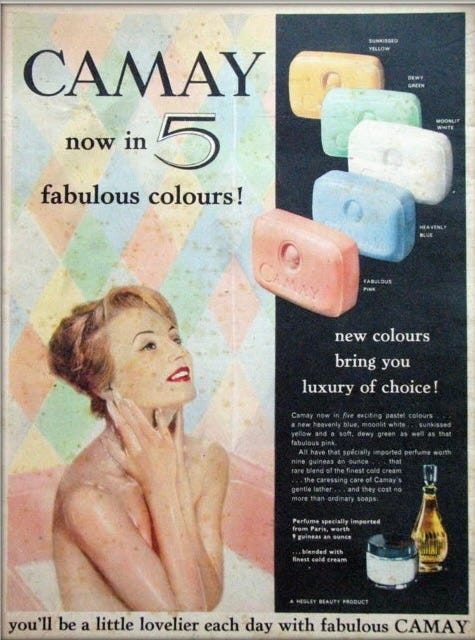


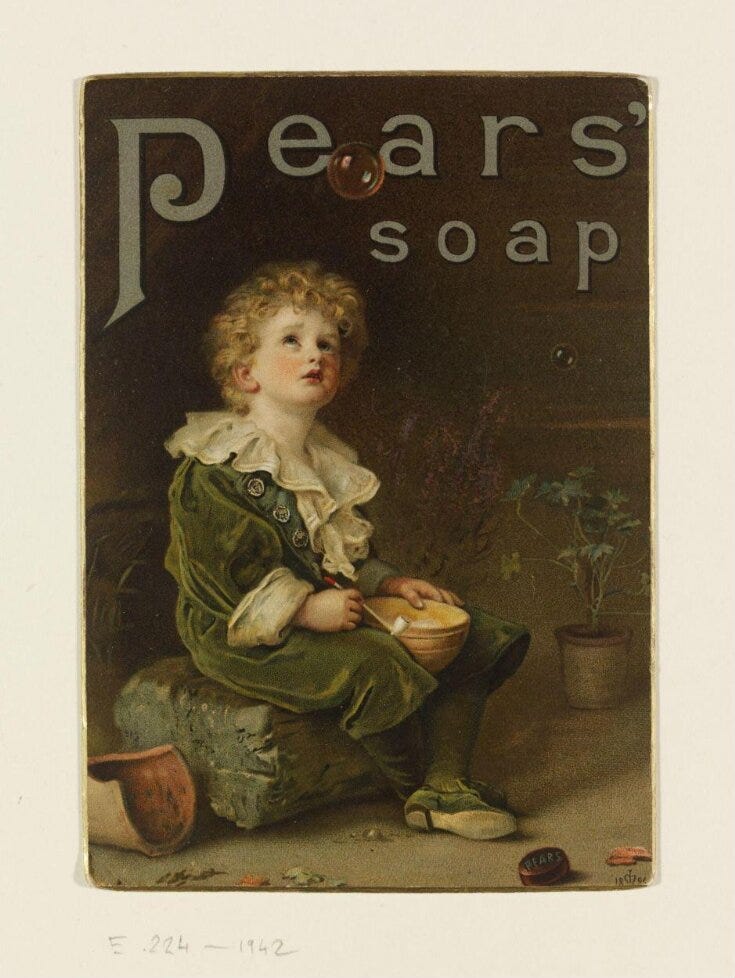
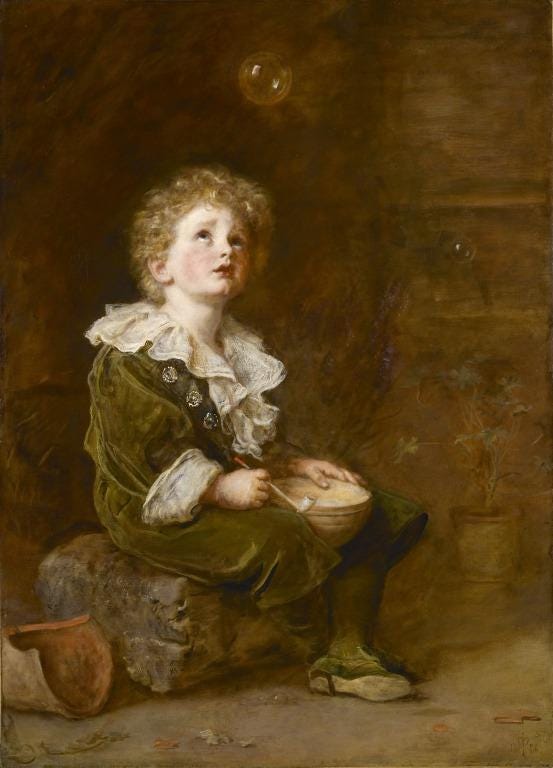
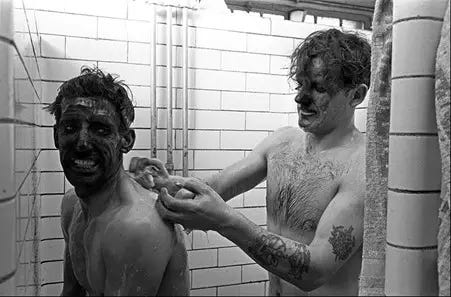

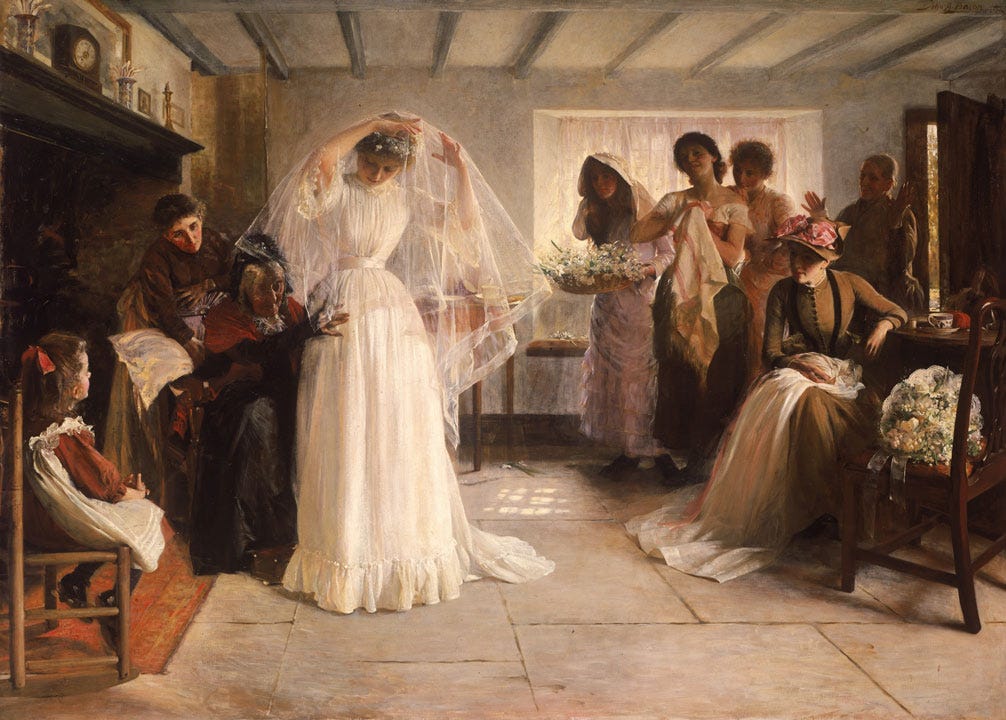
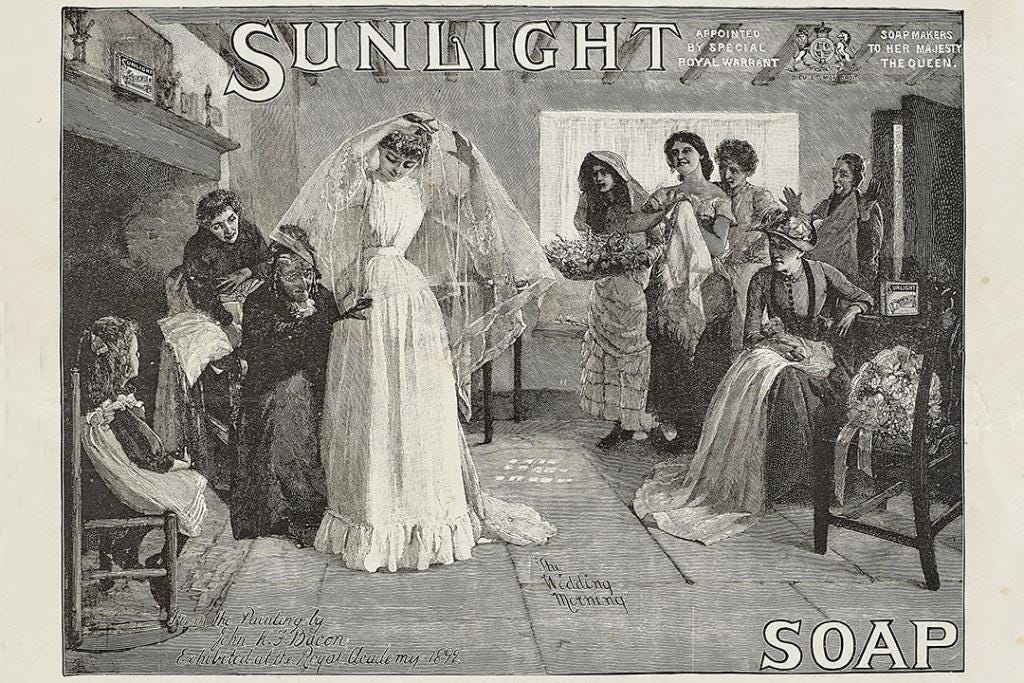

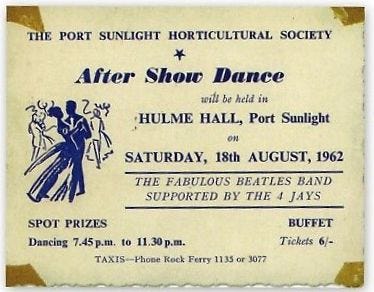
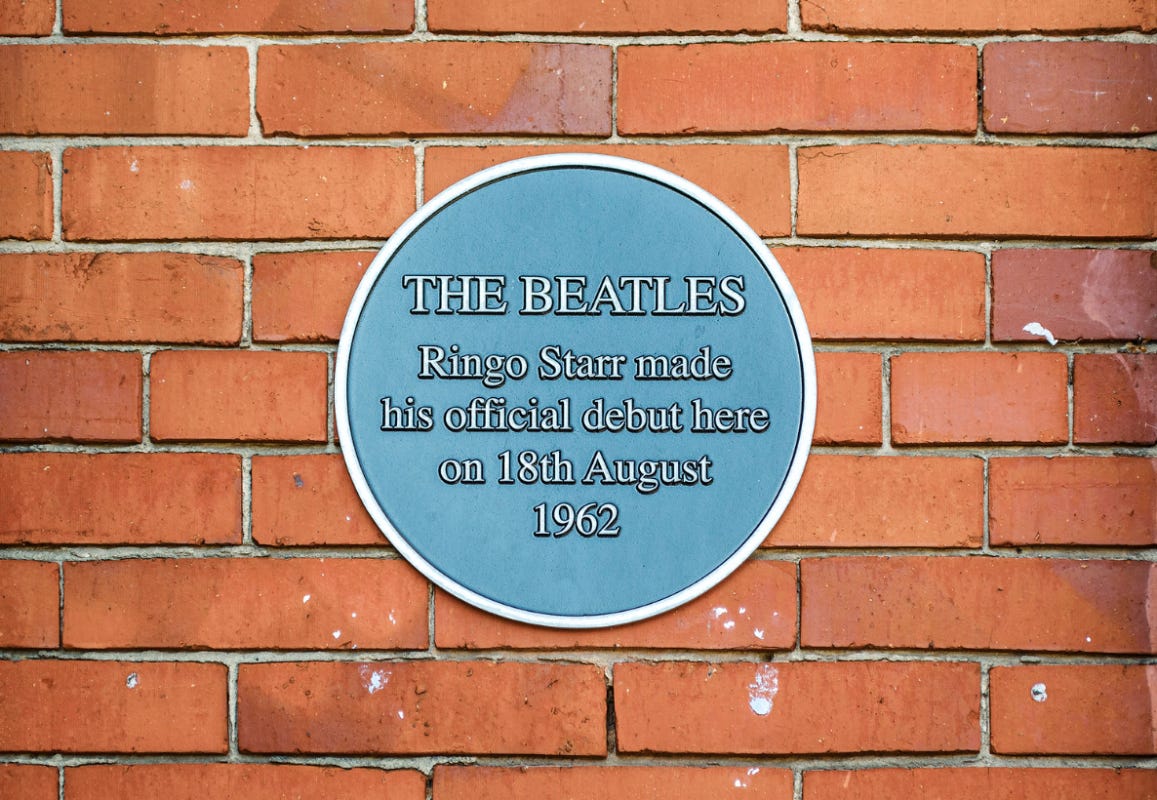

I thought I was the only person in the world who remembered Aqua Manda!. It is indelibly connected in my memory with working as a Saturday girl in an old-fashioned pharmacy in mid Wales followed by Saturday evenings at the disco in the Strand Hall. I definitely had the oatmeal soap which left oat flakes in the bath like bits of dried porridge. It is also weirdly connected in my memory with the conversion of our little town to natural gas. A gang of young man employed to convert all the appliances came to town like cowboys in an old fashioned western…sales of Aqua Manda soared….
Fifteen years ago I suddenly found I could no longer buy my favourite soap, which came in plain tissue and no label from a local garden centre. I was gutted and didn’t know what to do. After much thought I realised the only solution was to make my own and have been doing this ever since. Once mastered, it’s an utterly absorbing and all-consuming hobby and one that has given me so much pleasure and inspiration and actually seen me through some dark days. Thank you Jane for your lovely post and link to the wonderful Lady Lever Gallery. In celebration of your article a soap day is called for….Fennel & Spearmint I think….